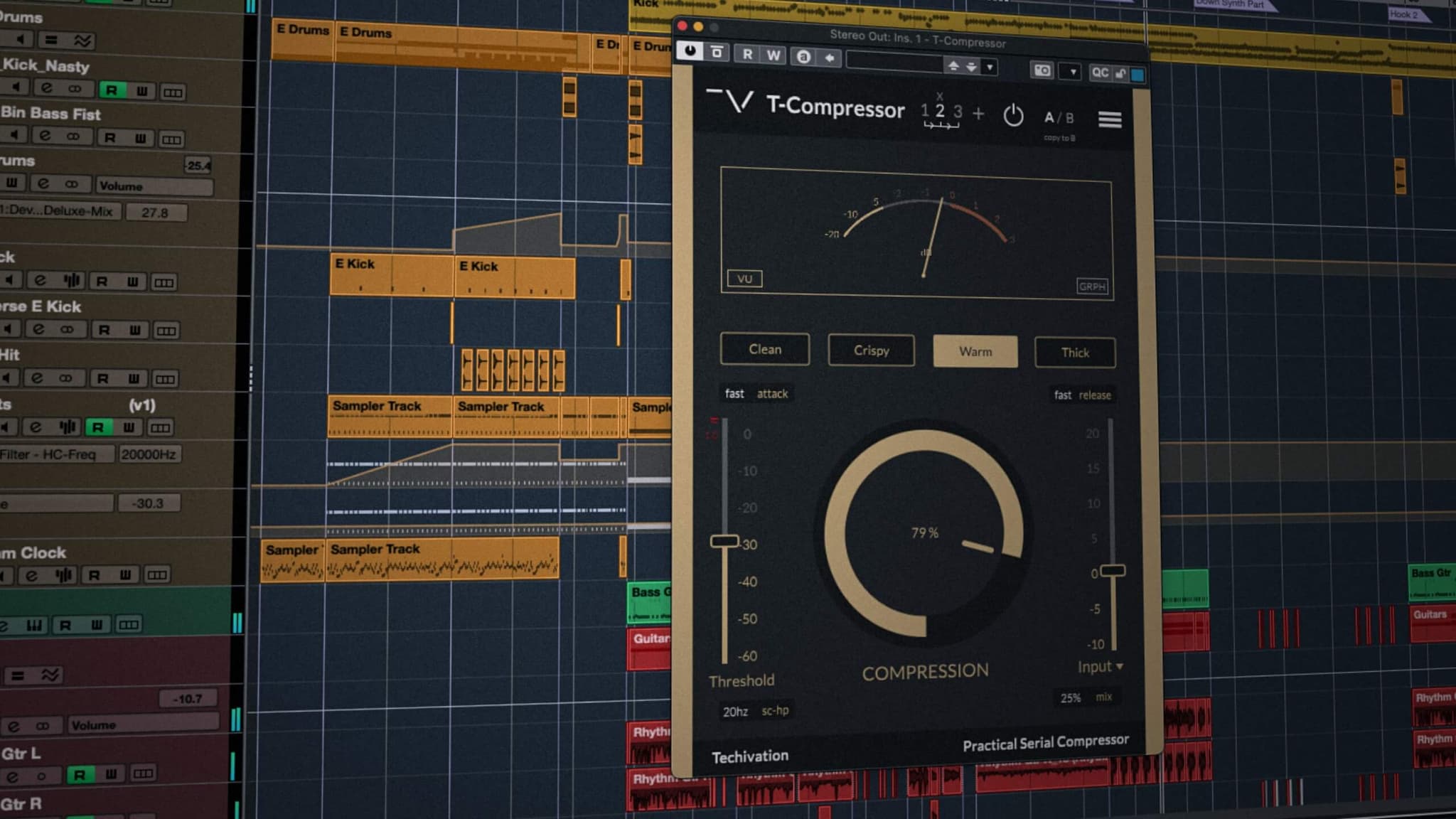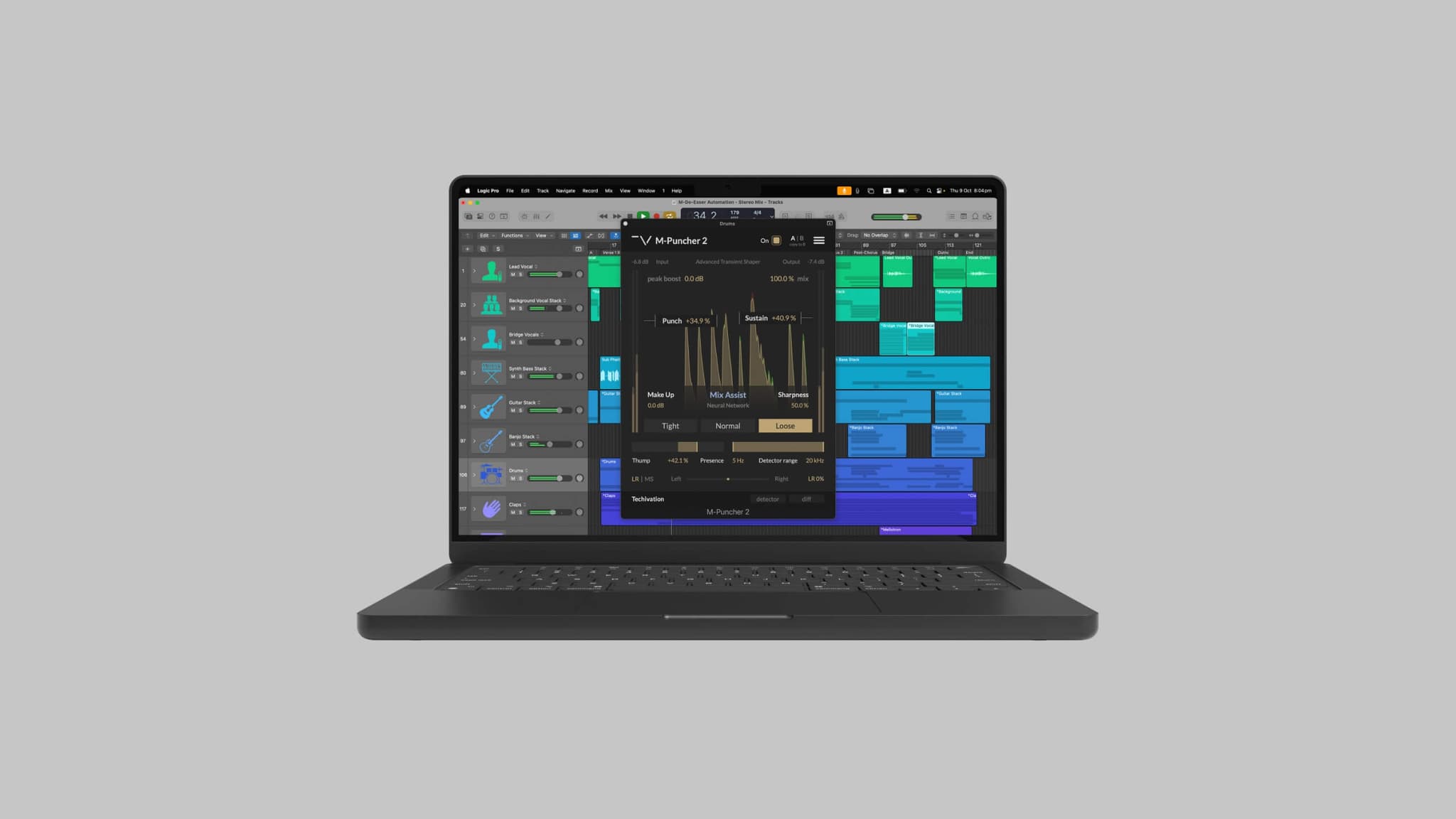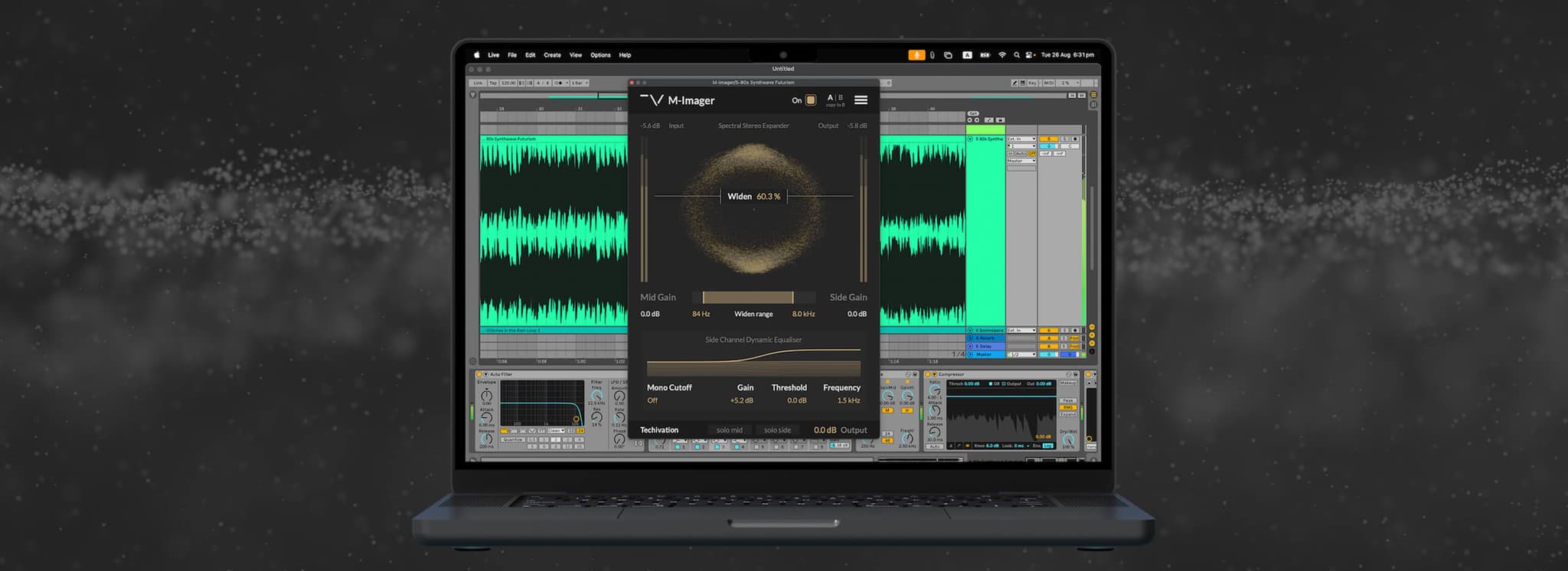Using Serial Compression & Side-Chain High-Pass Filtering in T-Compressor

Compressors are great tools for reducing dynamic range and adding character to your tracks. T-Compressor makes easy work of this with its different compression modes and straightforward controls. In addition to that, there are a couple of interesting features in T-Compressor that can help take your compression game to the next level.
Serial Compression
Serial compression is where you have multiple compressors working together in series. Sometimes, if you apply too much compression with one compressor, it can sound over-done and unnatural. The benefit of serial compression, however, is that you can spread the load across multiple compressors, which can yield a more natural-sounding result.
T-Compressor allows you to stack up to 3 compressors within one plugin, which is a super convenient way to handle multiple stages of compression. Each compressor instance has independent controls, so you can dial them in to each achieve different goals and blend them together for a great end result.
For this first example, I’ve put T-Compressor on my mix bus. The first compressor is doing 1-2dB of gain reduction (GR) on the loudest peaks to even the dynamics out; the second is doing extreme compression but with the mix at 25% (parallel compression) to thicken everything up; the third is doing very light compression on ‘Crispy’ for a touch of top end shine.
It’s subtle, but the mix is sounding a bit more energetic, yet also controlled. Notice in particular how the snare is tucked back in the mix slightly, and all the elements sound 'glued' together.
3.jpg&w=2048&q=75&dpl=dpl_AB6oMDe8HWGjs7BQtFrqJRp1LyPo)
Serial Compression on MixBus
T-Compressor: Bypassed
Before/After Comparison - Adding Weight to Kick & Snare
In example two, I’ve used T-Compressor to apply serial compression to an acoustic guitar. Three compressors are doing ~7dB of GR in total between them on the loudest peaks (3+3+1). By doing this in multiple stages, none of the compressors have to work too hard, and each stage reduces the dynamic range a little more. The result is an upfront and consistent sound that is still natural. (The ‘Crispy’ mode is also boosting the high frequencies in a pleasant way.)
You can also hear what it sounds like if I achieve 7dB of GR using just one compressor. The compression sounds a bit overdone and too noticeable; the result is not quite as gentle, nor is there the same consistency in volume as was achieved with three compressors.
.jpg&w=2048&q=75&dpl=dpl_AB6oMDe8HWGjs7BQtFrqJRp1LyPo)
Serial Compression on Guitars
T-Compressor (3 Compressors): Bypassed
Before/After Comparison - Adding Weight to Kick & Snare
T-Compressor (1 Compressor): Bypassed
Before/After Comparison - Adding Weight to Kick & Snare
Side-Chain High-Pass Filter
The side-chain high-pass filter (sc-hp) is a great feature, particularly when compressing something like drums or a mix bus where you have a wide frequency range but don’t want the low-frequency elements such as kick drum and bass to make the whole mix 'pump' or over-compress when the compressor is engaged.
What the sc-hp does is stop any frequencies below the filter amount from triggering the compressor. The full frequency range is still audible and affected by the compressor, but this technique can help to prevent uneven dynamics and an over-compressed sound if that’s not what you want. (Having said that, ‘pumping’ can be a cool effect in certain contexts!)
Here I’ve put T-Compressor on my mix bus, which is helping everything sound consistent and ‘glued’ together. With the sc-hp set to 110 Hz, the kick drum, which has a lot of low-end energy, isn't triggering the compression. If I lower the sc-hp to 20 Hz, the whole mix becomes over-compressed and pumps each time the kick drum plays. I could then leave the sc-hp at 20 Hz but raise the threshold until it isn’t over-compressing with each kick drum, however in this case the overall mix now doesn’t really sound compressed or glued like it did before.
So, to my ears, the compression is working best for this track when the sc-hp is set higher. It sounds tight and cohesive, each element is upfront and the snare is sitting just right! (The sc-hp number doesn’t really matter; use your ears to find the point where the low-frequency elements aren’t triggering too much compression for your taste.)
%25201%2520(1)%2520(1).jpg&w=2048&q=75&dpl=dpl_AB6oMDe8HWGjs7BQtFrqJRp1LyPo)
Mix Compression Side-chain High-pass filter (Same threshold)
T-Compressor: Bypassed
Before/After Comparison - Adding Weight to Kick & Snare
Mix Compression Side-chain High-pass filter (Higher threshold)
T-Compressor: Bypassed
Before/After Comparison - Adding Weight to Kick & Snare
Serial compression and side-chain high-pass filtering can be very effective tools. Make sure to try them out on your next mix!
Written by Jacob Sells
Instagram: jacobsellsaudio | Linktree: linktr.ee/jacobsellsaudio
Share this Article
Featured in this post



![[Video] New Update Released: Techivation M-Exciter](/_next/image?url=https%3A%2F%2Fstatic.techivation.com%2Fuploads%2FM-Exciter%2520New%2520Update.jpg&w=2048&q=75&dpl=dpl_AB6oMDe8HWGjs7BQtFrqJRp1LyPo)
